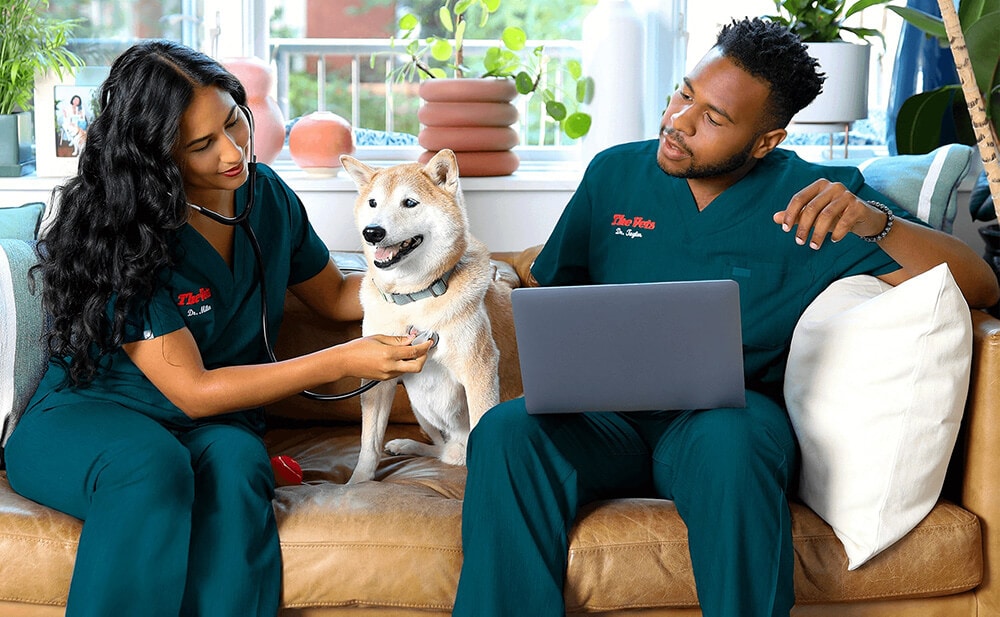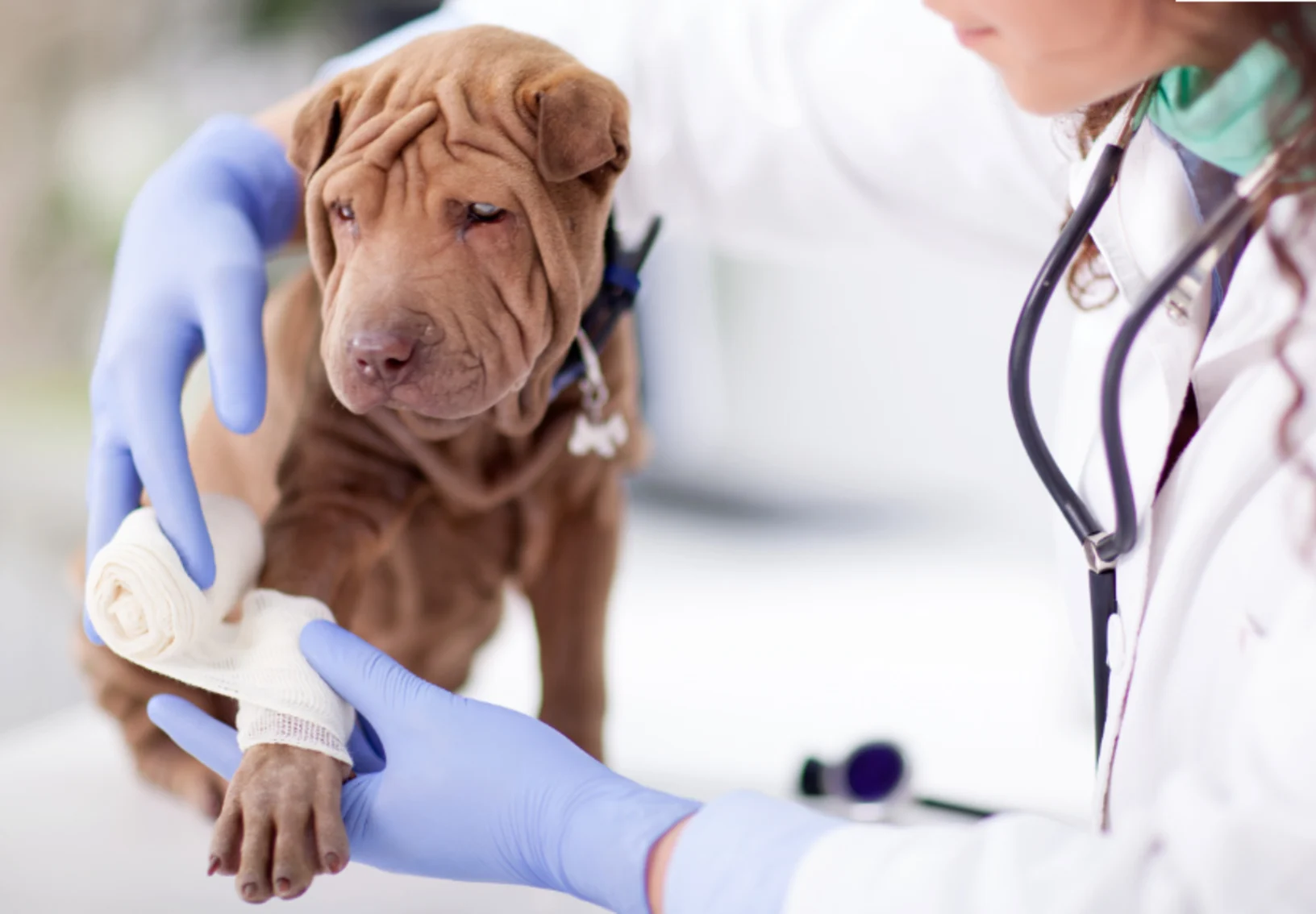Why Animal Rehabilitation Is Essential: the Perks of Veterinarian Providers for Your Pet dog's Recuperation
Animal rehab is a crucial component of recovery for animals encountering injuries or impairments. Veterinary services supply important assistance via tailored recovery plans that resolve specific needs. These strategies commonly include discomfort administration, physical treatment, and nutritional assistance. Comprehending the different aspects of pet rehabilitation can illuminate its relevance in boosting healing outcomes. What details advantages do these solutions provide, and how can they transform an animal's healing trip?
Understanding Pet Rehabilitation
Animal recovery incorporates a variety of therapeutic methods aimed at recovering the health and wellness and capability of injured or impaired pets. This field integrates numerous methods, including physical treatment, hydrotherapy, and occupational therapy, tailored to satisfy the specific demands of each animal. Recovery experts examine an animal's problem, creating personalized therapy plans that might include workouts to enhance muscular tissues, boost mobility, and improve general well-being. The procedure not only concentrates on physical healing but likewise addresses psychological and behavioral aspects. Animals commonly experience tension and stress and anxiety complying with an injury, making psychological health considerations necessary in rehabilitation. By producing a supportive setting, specialists can assist animals regain their confidence and adjust to their brand-new conditions. Via routine sessions, pets can experience considerable improvements, ultimately leading to a better high quality of life. Generally, recognizing pet rehab highlights its importance in advertising healing and improving the bond between animals and their proprietors.
The Function of Pain Management in Healing
Just how necessary is reliable discomfort management in the recovery of damaged animals? It plays an important role in helping with healing and enhancing the total well-being of pets. Proper pain management not only reduces discomfort however also promotes wheelchair, making it possible for pets to join rehab activities required for recovery. When discomfort is properly managed, animals often tend to respond positively to treatment, resulting in quicker rehabilitation outcomes.Veterinarians use various techniques to analyze and resolve discomfort, including drugs, acupuncture, and alternate therapies. By tailoring discomfort monitoring techniques to the private demands of each pet, veterinarians can guarantee that pet dogs stay tranquil and participating throughout their recuperation journey. Additionally, lessening pain helps in reducing anxiety, which can prevent healing and lengthen recuperation times. To summarize, reliable pain monitoring is vital for enhancing the healing procedure and boosting the quality of life for damaged animals.
Physical Treatment Techniques for Pet Dogs
Various physical therapy strategies are available to assist in the rehabilitation of family pets recovering from injuries or surgical treatments (animal emergency care bellingham). These strategies can enhance wheelchair, relieve pain, and promote recovery. Healing exercises, for example, assistance reinforce muscular tissues and improve joint feature, allowing pets to regain their physical capacities progressively. Manual treatment, which includes massage therapy and mobilization, can relieve stress and boost blood circulation, adding to a faster recovery.Other strategies such as easy variety of motion exercises motivate joint adaptability and reduce stiffness. In addition, electric stimulation therapy might be utilized to stimulate nerves and muscular tissues, promoting healing and discomfort relief.Veterinary experts commonly customize these strategies to each pet's details requirements, guaranteeing an extensive recovery strategy. By implementing these physical therapy approaches, pets can experience better high quality of life and a much more successful healing from their ailments. The integration of these practices into recovery programs is crucial for ideal recuperation outcomes
Benefits of Hydrotherapy for Recovery
Hydrotherapy uses considerable advantages in animal rehabilitation, particularly in boosting flexibility. This water-based therapy promotes discomfort alleviation while offering comfort to wounded or recouping animals. Furthermore, it facilitates strength-building exercises that contribute to general physical recuperation.
Enhanced Movement Enhancement
As animals recover from injuries or surgical treatments, enhanced flexibility commonly becomes a primary goal of their rehabilitation. Hydrotherapy acts as a beneficial device in attaining this objective. Through water-based exercises, animals can take part in low-impact motions that facilitate joint movement and enhance muscle mass without the tension of weight-bearing tasks. The buoyancy of water supports their bodies, permitting boosted range of motion and mobility improvement. Furthermore, hydrotherapy motivates far better equilibrium and coordination, which are important for recovering regular activity patterns. Normal sessions can result in considerable progress in an animal's physical capabilities, eventually boosting their lifestyle. This technique not only help in recovery yet also promotes a much more energetic and meeting way of living post-rehabilitation.
Pain Alleviation and Convenience

Alleviation from discomfort is an important aspect of animal rehab, and hydrotherapy substantially adds to this procedure. By making use of water's buoyancy, hydrotherapy lowers joint anxiety and relieves discomfort throughout motion. This healing method provides a relaxing setting where pets can take part in gentle workouts without the full weight of their bodies influencing their recuperation. The cozy water stimulates blood circulation, advertising healing while additionally motivating leisure. Furthermore, hydrotherapy sessions can be tailored to fulfill the particular demands of the pet, guaranteeing optimal comfort. As pet dogs experience decreased pain and increased comfort degrees, their general willingness to join rehabilitation tasks frequently boosts, resulting in a much more reliable recovery journey. As a result, hydrotherapy acts as an important tool in enhancing discomfort relief and comfort throughout recovery.
Strength Building Workouts
Strength-building workouts play an essential role in the recovery process, with hydrotherapy offering special advantages. This form of treatment uses water resistance to boost muscle toughness without putting extreme strain on the joints. The buoyancy of water supports the pet dog's weight, permitting much safer motion and raised variety of activity. Additionally, hydrotherapy can improve cardio health and advertise total physical fitness, helping in quicker healing from injuries or surgical procedures. The regulated environment additionally minimizes the danger of reinjury, making it a perfect option for animals needing rehabilitation. Routine hydrotherapy sessions can cause obvious enhancements in movement, strength, and endurance, eventually boosting the pet's high quality of life and capacity to go back to regular tasks.
Importance of Customized Rehab Plans
Customized rehab plans are vital for attending to the unique demands of each animal, making certain customized treatment strategies. These plans enable efficient development tracking and essential modifications, fostering perfect recovery results. Furthermore, a holistic technique can improve the overall health of the animal, promoting an extra detailed rehabilitation experience.
Individualized Therapy Approaches
While several rehab programs embrace a one-size-fits-all method, the unique demands pop over to this site of each pet require customized therapy plans for optimal recovery. Customized rehab plans consider different elements, including the pet's types, age, case history, and specific injuries or conditions. By tailoring interventions, vets can address each family pet's distinct obstacles, making the most of the performance of the rehabilitation procedure. Individualized strategies may incorporate different modalities such as physical treatment, hydrotherapy, and restorative exercises, ensuring that the therapy aligns with the pet's abilities and development. In addition, individualized methods cultivate a stronger bond in between the animal and the caretaker, promoting an extra appealing and encouraging recuperation setting. Inevitably, personalized treatment is necessary for achieving finest possible outcomes in pet recovery.
Progress Monitoring and Adjustments

Holistic Recuperation Techniques
Holistic healing approaches are vital for effective animal recovery, as they highlight the relevance of personalized therapy strategies tailored to every animal's certain demands. This method takes into consideration the physical, emotional, and environmental variables impacting healing. Personalized rehabilitation plans may include a mix of physical treatment, dietary therapy, and behavioral modifications. By addressing these varied elements, veterinarians can boost the general wellness of the animal and promote a faster healing. Such customized strategies facilitate a deeper understanding of the pet's distinct challenges, leading to more efficient interventions. Ultimately, all natural healing strategies not just enhance physical health yet additionally add to the pet's mental and emotional security, making sure an extensive rehab experience.
The Influence of Nutrition on Recuperation
Nourishment plays a vital role in the recuperation process for fixing up animals, often figuring out the rate and efficiency of healing. A well-balanced diet plan provides the necessary nutrients that sustain cells repair work, increase the body immune system, and improve general vigor. Protein is especially vital, as it aids in muscle rebuilding and recuperation from injuries. Necessary fatty acids, vitamins, and minerals also add to decreasing swelling and promoting optimum cellular function.Veterinarians often stress the relevance of tailored nutrition strategies, thinking about each animal's certain demands, age, and wellness standing. Proper hydration is equally crucial, as liquids promote Going Here vitamins and mineral absorption and aid in detoxification. By guaranteeing that pets get proper nourishment, caregivers can substantially improve their possibilities of a successful healing, leading to much better lasting wellness end results. Ultimately, nutrition acts as a foundational aspect in the rehabilitation trip, supporting pets in reclaiming stamina and strength post-injury or health problem.
Success Stories: Pets Who Flourished After Recovery
Effective rehab stories are plentiful, showcasing the resilience of animals that have conquered considerable challenges. Take, for circumstances, Bella, a golden retriever that experienced severe injuries from a vehicle accident. With devoted veterinary care and a thorough rehab program, she regained her wheelchair and returned to her playful self, much to her proprietor's joy. In a similar way, Max, an elderly pet cat diagnosed with arthritis, experienced remarkable enhancement via a combination of physical treatment and discomfort monitoring. His newfound dexterity allowed him to appreciate his favored sunbathing spots again. Another motivating situation is that of Coco, a rescued greyhound who conquered anxiousness through behavior alteration view publisher site and socialization techniques, allowing her to thrive in her new home. These success stories exhibit the transformative power of pet rehabilitation, highlighting that with the right support, pet dogs can not only recover yet lead fulfilling lives, enriching the bonds they show their family members.
Often Asked Concerns
How Long Does the Rehab Process Normally Consider Animals?
The rehab procedure for pet dogs usually varies based on the injury or condition, ranging from a few weeks to numerous months. Private progression, treatment type, and dedication to workouts greatly influence the general duration of recovery.
Exist Any Type Of Threats Related To Animal Rehab?
Pet rehab may lug dangers such as worsening of injuries, improper strategies leading to discomfort, or inadequate tracking during healing. These factors can impede development and impact the general efficiency of the rehab process.

Can All Pets Benefit From Rehab Services?
Not all animals might need recovery, yet many can benefit greatly. Rehab services can enhance wheelchair, ease discomfort, and boost overall health, particularly for those recuperating from injuries, surgical procedures, or chronic conditions.
Exactly How Can I Prepare My Pet for Recovery Sessions?

What Indications Show My Pet Needs Rehab?
Indicators showing an animal may need rehab consist of trouble walking, limping, decreased activity degrees, reluctance to leap, or signs of pain. Observing these actions can prompt proprietors to look for professional assessment and treatment for their pet dogs.